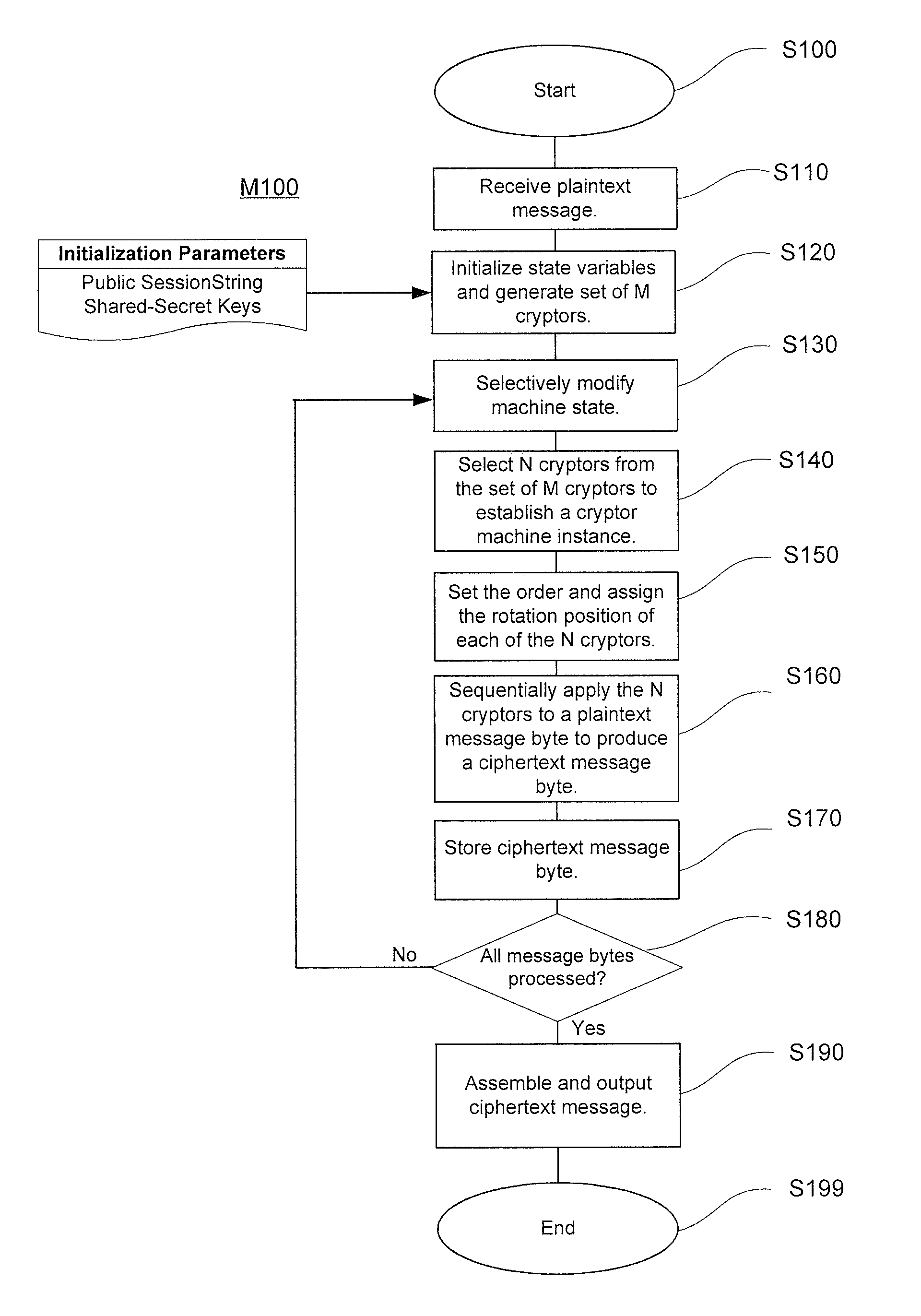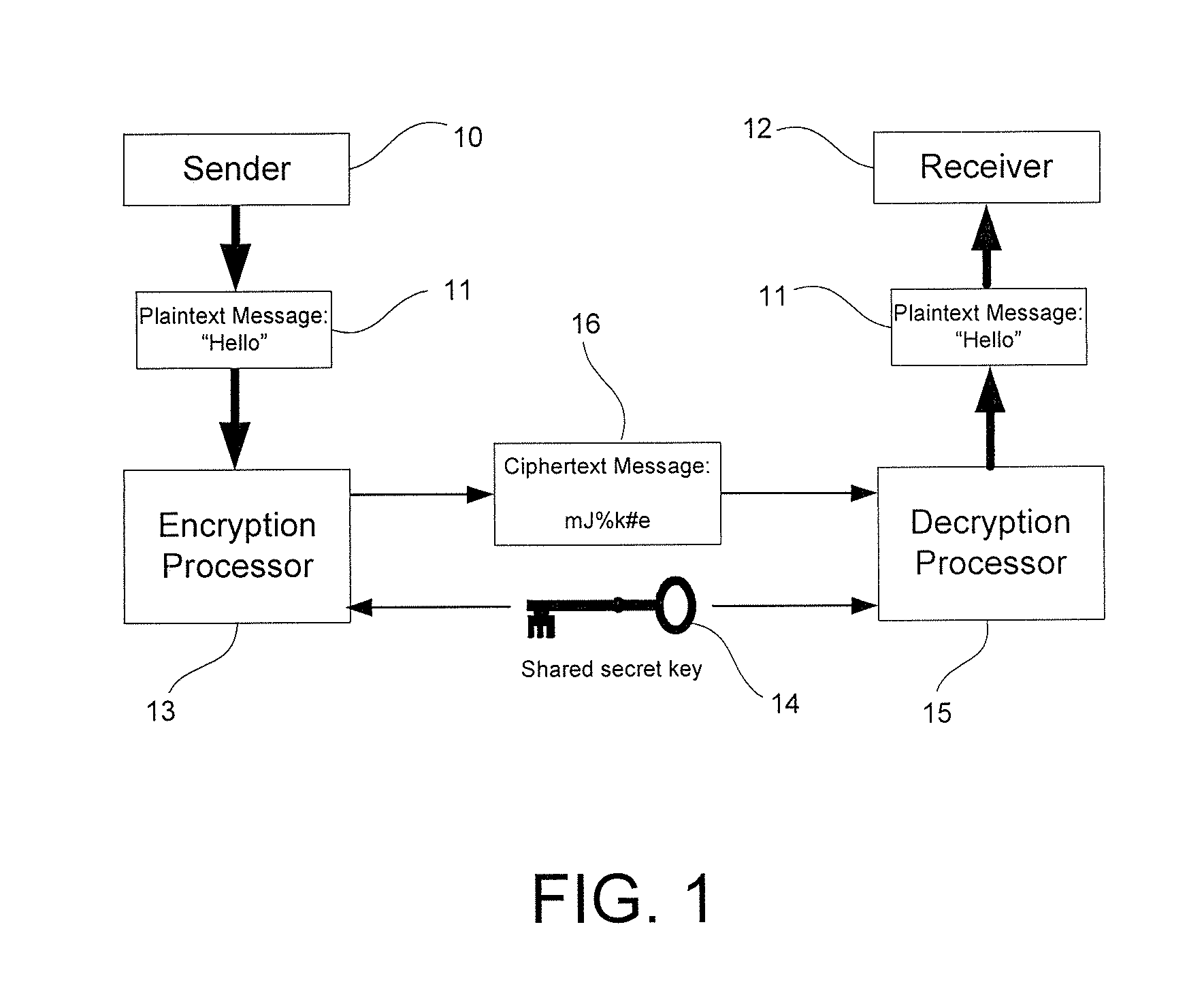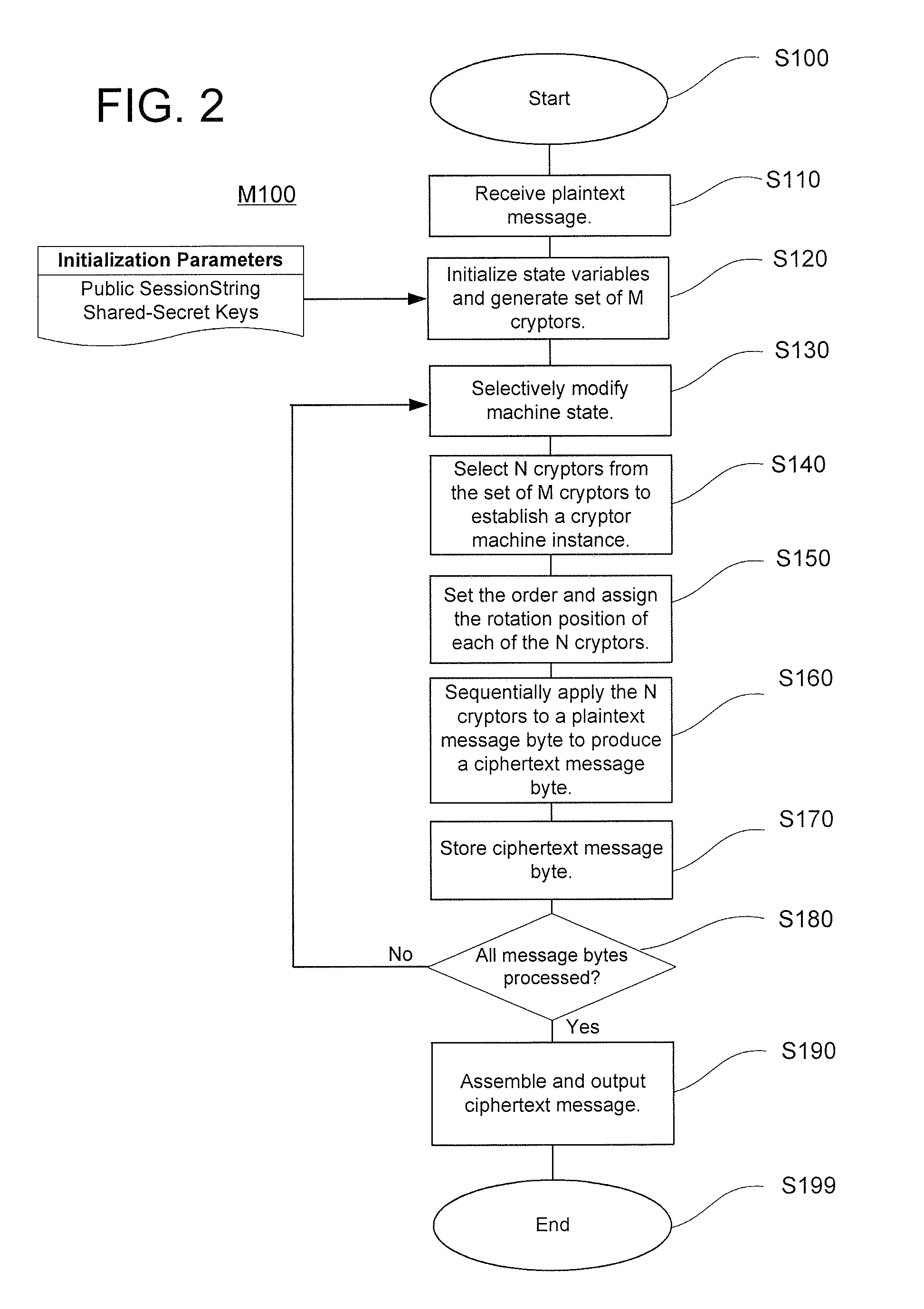Method and System for Conducting High Speed, Symmetric Stream Cipher Encryption
- Summary
- Abstract
- Description
- Claims
- Application Information
AI Technical Summary
Benefits of technology
Problems solved by technology
Method used
Image
Examples
Embodiment Construction
[0043]The present invention introduces innovative strategies and concepts that revolutionize encryption technology based on the concepts of traditional rotor machines. Such machines, and their computer-simulated counterparts, use various stepping algorithms to rotationally reposition a small set of static codewheels mounted in a fixed relative order to produce periodic sequences of monoalphabetic ciphers used to encrypt plaintext bytes. In stark contrast, the stream cipher of the present invention effectively constitutes a virtual polymorphic chamber that pseudo-randomly generates essentially aperiodic sequences of virtual dynamic rotor machines, each used to encrypt only a single plaintext byte. This polymorphic chamber is comprised of a large plurality of dynamic codewheels (referred to herein as “cryptors”) whose monoalphabetic cipher contents are constantly subject to unpredictable alterations prior to each process iteration. Then, for each process iteration, a subset of the cur...
PUM
 Login to View More
Login to View More Abstract
Description
Claims
Application Information
 Login to View More
Login to View More - R&D
- Intellectual Property
- Life Sciences
- Materials
- Tech Scout
- Unparalleled Data Quality
- Higher Quality Content
- 60% Fewer Hallucinations
Browse by: Latest US Patents, China's latest patents, Technical Efficacy Thesaurus, Application Domain, Technology Topic, Popular Technical Reports.
© 2025 PatSnap. All rights reserved.Legal|Privacy policy|Modern Slavery Act Transparency Statement|Sitemap|About US| Contact US: help@patsnap.com



